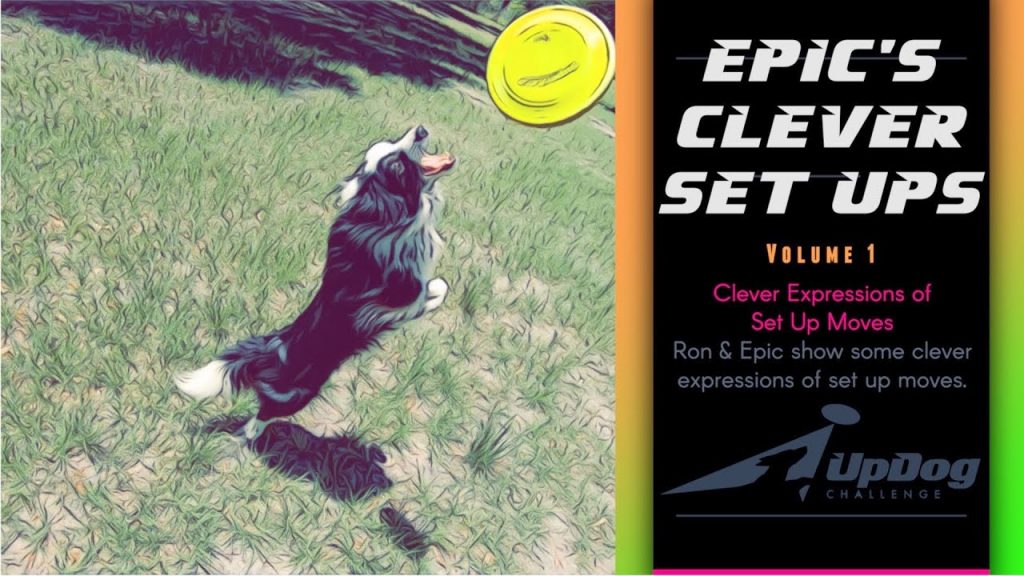
Epic’s Clever Set Up Moves | Volume 1 Part II | Vaults and Flips to Flanks
The first installment of this series touched on Scoot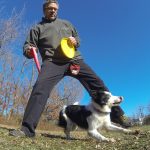 A Scoot is a Set Up Move where the dog scoots backwards between the handler’s legs. It’s a really clever Set Up Move, the image of your dog spinning around and shimmying backwards... More & Fakie
A Scoot is a Set Up Move where the dog scoots backwards between the handler’s legs. It’s a really clever Set Up Move, the image of your dog spinning around and shimmying backwards... More & Fakie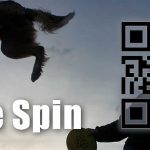 An athletic Set Up Move, the Fakie is a flip off of the handler's body (normally the chest) with no disc in flight or intended to be caught. It is usually named by... More variations. And alluded to Interior Flatwork
An athletic Set Up Move, the Fakie is a flip off of the handler's body (normally the chest) with no disc in flight or intended to be caught. It is usually named by... More variations. And alluded to Interior Flatwork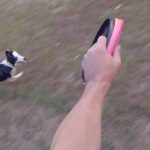 Flatwork is the stuff that happens between the catches. How the team moves and transitions, often without the disc, is flatwork. Flatwork concepts in disc dog are taken from the agility and herding... More and Complex Set Up Moves
Flatwork is the stuff that happens between the catches. How the team moves and transitions, often without the disc, is flatwork. Flatwork concepts in disc dog are taken from the agility and herding... More and Complex Set Up Moves Set Up Moves are tricks that are used to establish timing and position in disc dog freestyle. Traditional tricks include: Around, Through, Backwards Through, and Scoot, but any or all of your tricks,... More. Well, here we are…
Set Up Moves are tricks that are used to establish timing and position in disc dog freestyle. Traditional tricks include: Around, Through, Backwards Through, and Scoot, but any or all of your tricks,... More. Well, here we are…
Set Up Moves are, in essence, Interior Flatwork, with an eye towards setting up a trick rather than moving the dog or setting up a simple throw and catch. This connection to Flatwork has escaped conventional disc dog wisdom and has left many handlers thinking they don’t do or don’t need flatwork.
Flatwork isn’t something you do, or something you need. Flatwork is. It is happening and you are either doing it, or it’s doing you.
In interior work, flips usually finish and roll right into another flip, a set up move, or a vault or over. The thing is, according to the First Law of Flatwork, there is always a flank.
Vaults, flips, and Overs all have a flank preference. Getting the position and the line oriented to that preference is half the battle with pulling off interior moves, and especially when it comes to pulling off the interior moves of your dreams.
Flips to Flanks – 1:32
Picking your dog up after a flip on either the clock or counter flank is a super cool move. It looks pretty and is super effective for wind management. It is also a terrific skill to have handy for when you need to adjust the dog’s line or position after a flip.
Understanding that a flip can release into either flank is a powerful piece of knowledge for the dog, handler and team. Once that knowledge is gained, the whole team knows that we could go in any direction after this move, and a key question must be answered before we move on: Where are we going?
Handler: You are going too fast! listen to me!
Dog: No I GOT THIS.
Handler: You don’t even know where we’re going!
Dog: Going Fast.
Working each flank after a flip, even just a few times, makes that horrifyingly truthful meme above a thing of the past. Your dog, and I do mean your dog, will stop and wait for you after the flip before taking off on the run or bum-rushing you for the vault or to maul the disc in your hand. It’s like magic.
It is useful magic too. Now The Now Phase is an integral part of the Play Cycle in the Play+ training philosophy. It embodies the current, immediate interaction between the handler and the dog, anchoring them in the present... More you don’t have to send your dog around to hook up before making a throw after a flip. You can go left or right, with purpose and control, after a flip.
The Now Phase is an integral part of the Play Cycle in the Play+ training philosophy. It embodies the current, immediate interaction between the handler and the dog, anchoring them in the present... More you don’t have to send your dog around to hook up before making a throw after a flip. You can go left or right, with purpose and control, after a flip.
Be sure to work both directions and get a feel for reading your dog’s landing and for which direction bests fit the landing of the flip or the situation you are trying to create.
Vaults to Flanks – 1:57
Vaults have a direction. Did you know that? Left to right is clock. Right to left is counter. A right handed leg vault is a clockwise vault. If you throw your vault under your armpit on your left side on a cross body back vault, it is a counter clock vault. If you throw your cross body back vault like a tyrannosaur (Rawrr!) to your right side, that’s a clockwise back vault.
The interesting thing about working vaults to flanks is that they are more often than not oppositional. A clockwise vault leads to a counter clockwise flank and vice versa.
The reason this happens is that the dog really wants to work in front of the handler. So when the vault shoots across the handler in one direction, the dog breaks off the flank and returns to the front of the hander in the other direction.
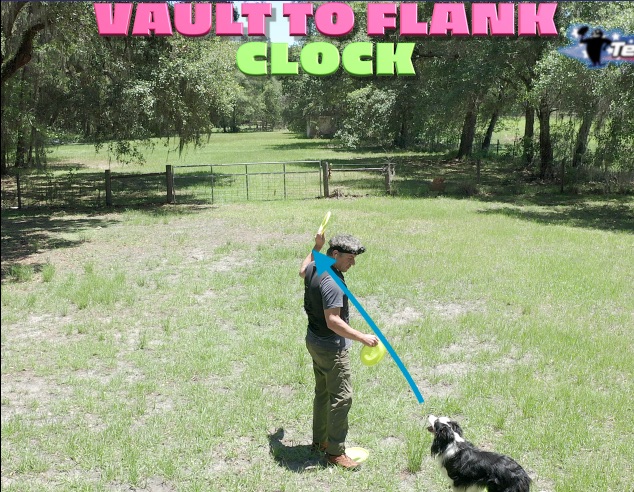
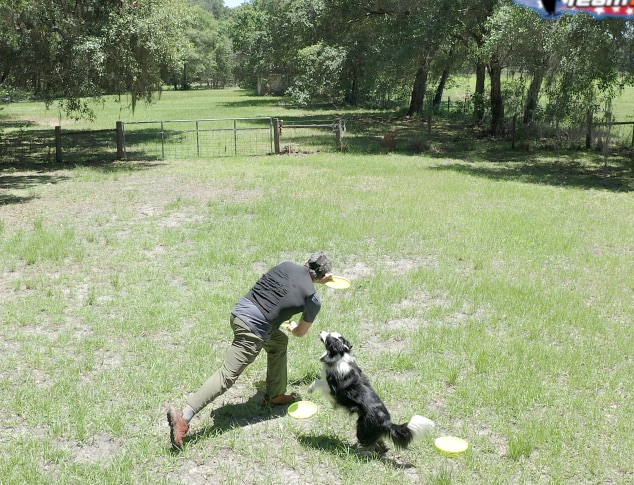
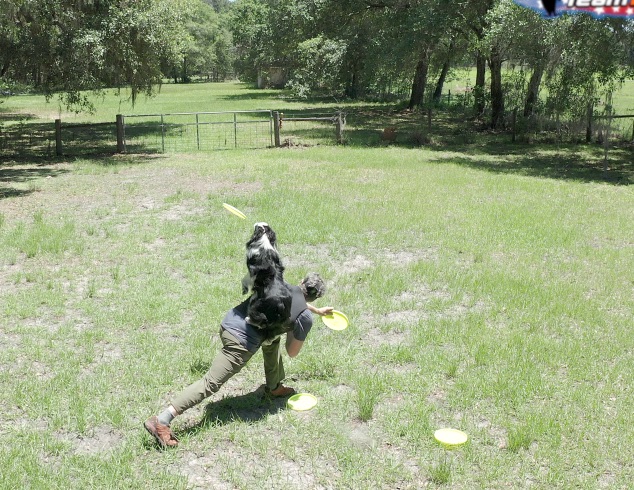
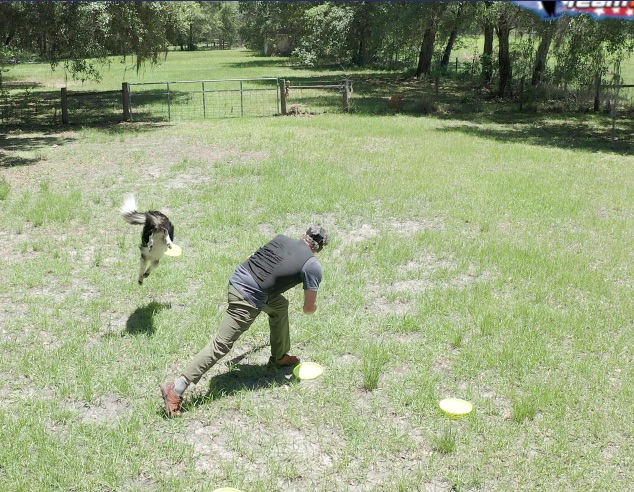
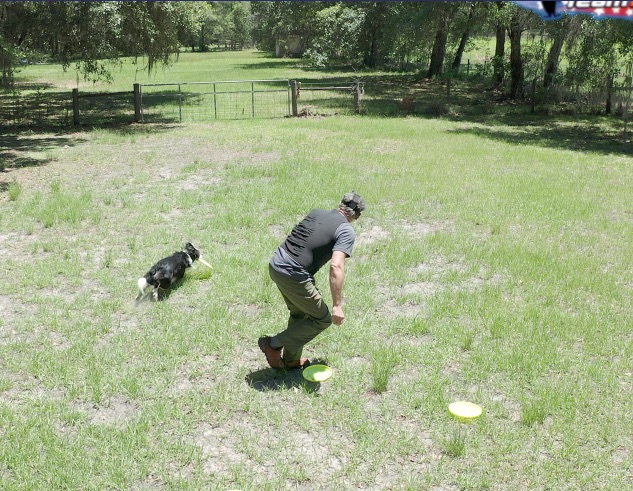
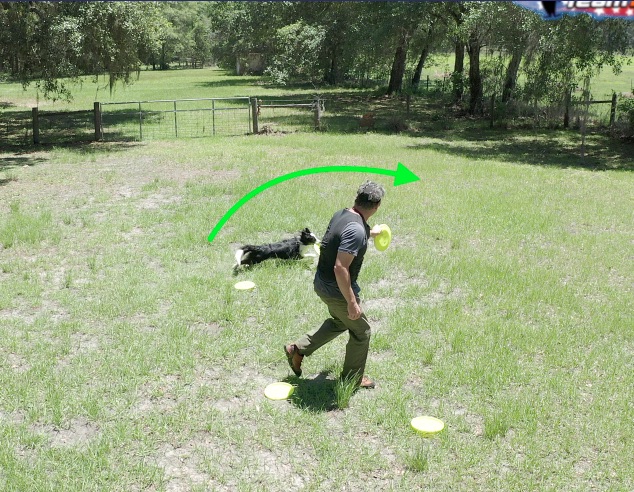
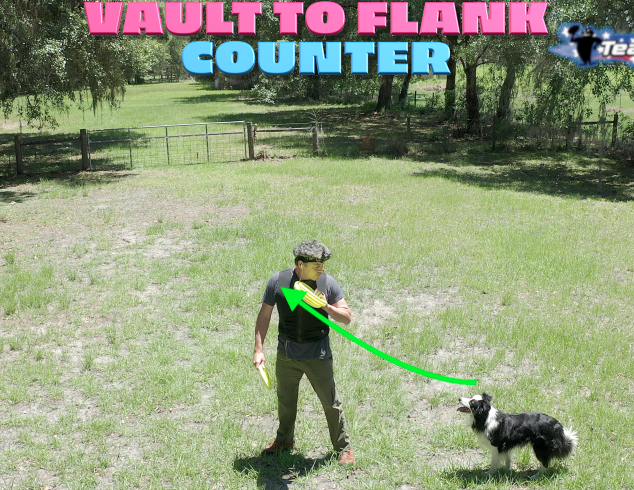
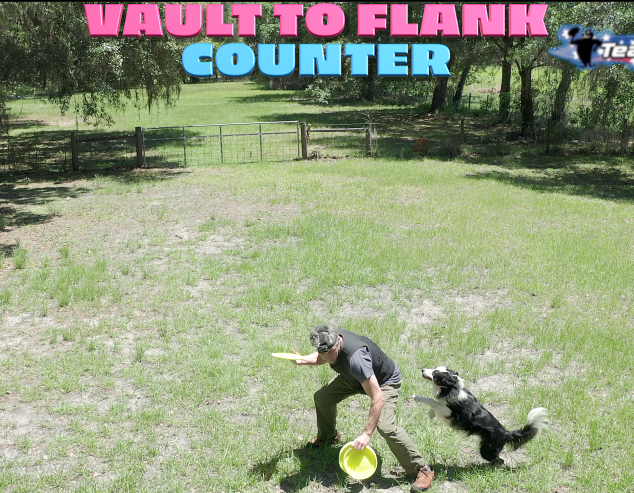
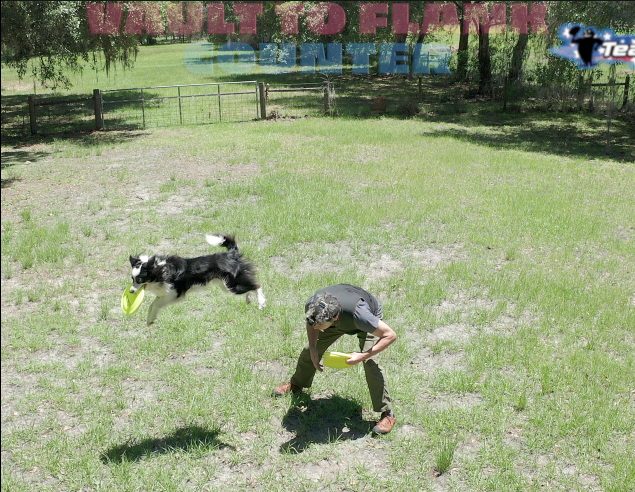
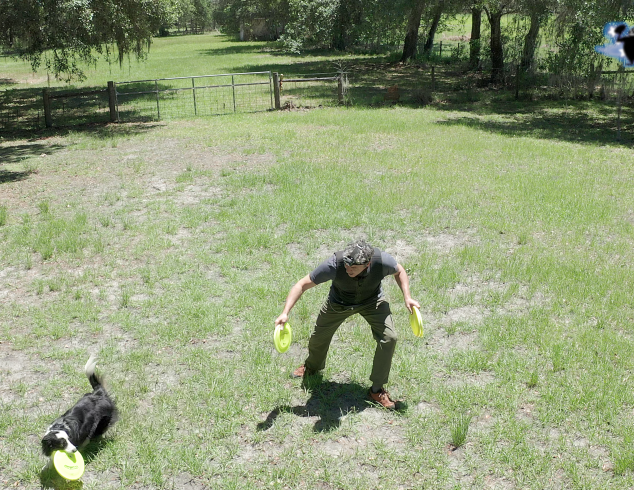
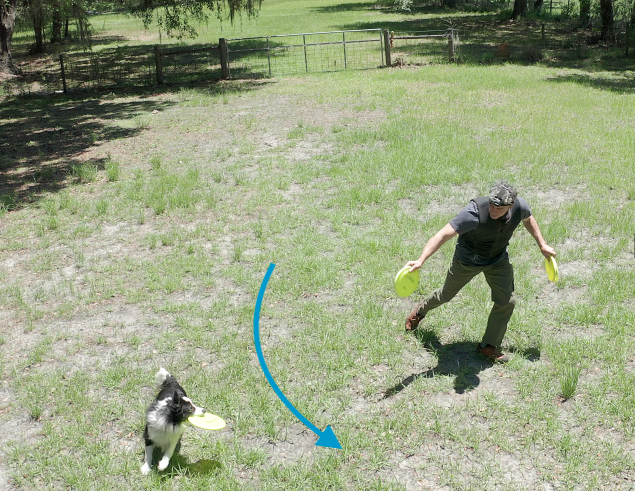
This is fairly reliable team movement. Even extremely unbalanced dogs will take these lines. It almost requires a reward history of going the “wrong way” to stop a dog from following these lines.
The same happens with a leg vault. Reverse Vaults are another story, but still can be finagled and flanked with the knowledge gained from the flip to flank.
Why Vault to Flank?
Aesthetics, safety, time, control, and creativity.
Aesthetics
The aesthetics of a dog, particularly a big dog, landing a vault and smoothly running out of it with his handler is far more appealing that that of a dog landing, screeching0 to a halt, and wrapping himself into a 4-legged pretzel to fire back at the handler.
A long, smooth loping landing is far more pretty to look at than a jarring compressed landing – particularly with big aggressive dogs (Malinois, I’m looking at you…).
Safety
Jarring starts and stops on landings from big air maneuvers are, by definition, not as safe as smooth, balanced landings with dispersed movement.
The safety of landing vaults and overs while dispersing the impact into flanking movement is undeniable. It is how dog moves when he’s not rabidly chasing the next piece of plastic.
Time and Control
The flank gives you time. The dog slam on the brakes and fire back on the handler for the next disc because he doesn’t know where the next disc is gonna be. He can’t bum-rush you for the next disc because we’re already moving together.
Moving with the dog on flank after the vault gives the handler handles on where the team goes next, just like it does with the flip. “Going fast” or “Cough it up, Karen!” is just not how this game works.
Creativity
Vaults, historically, reorient to the handler or are given an Out-Throw. That doesn’t leave a lot of room for creativity.
Moving with the dog after the landing gives the handler control over where we go next and time to navigate the next movement for the team. Having a bit of time and control over team movement sure makes being creative much easier.




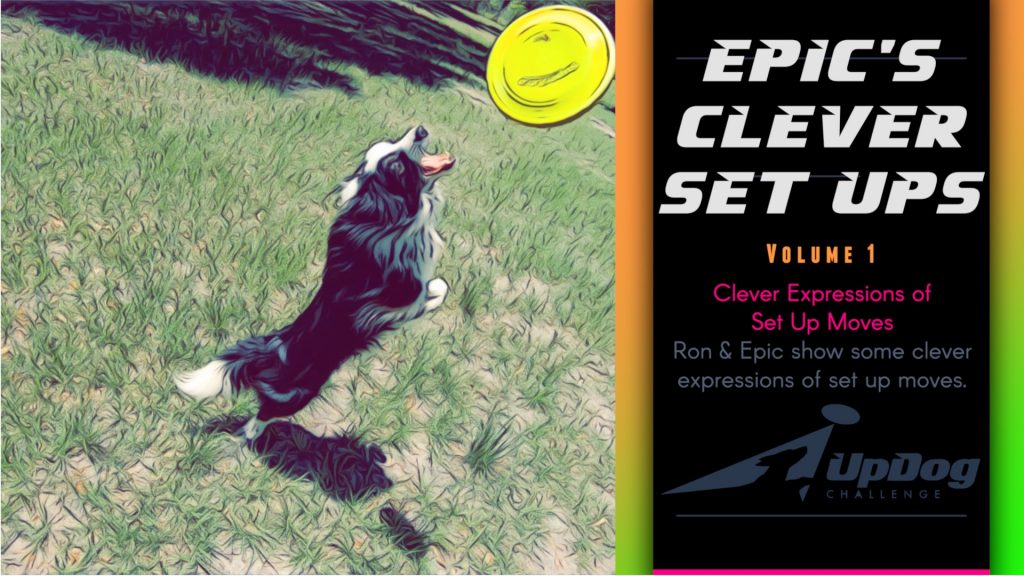


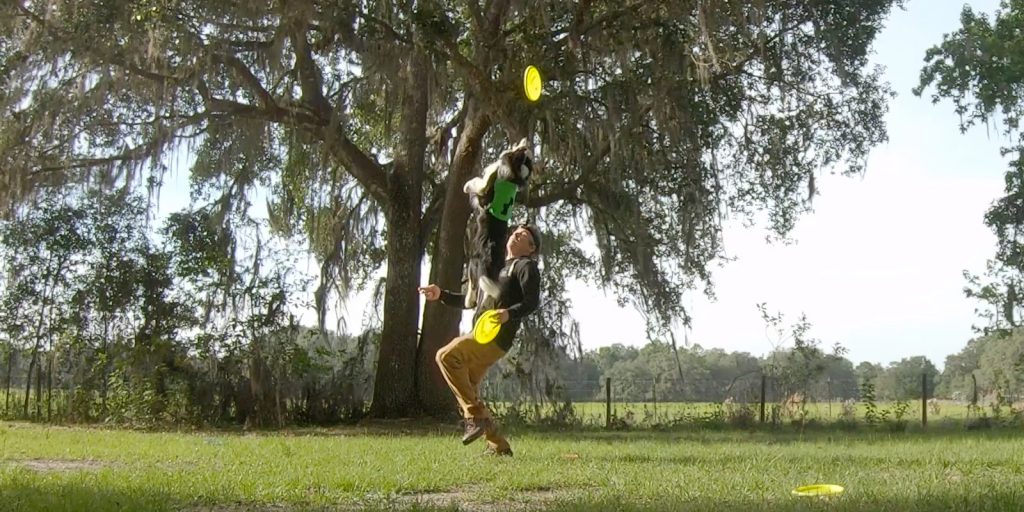


Responses